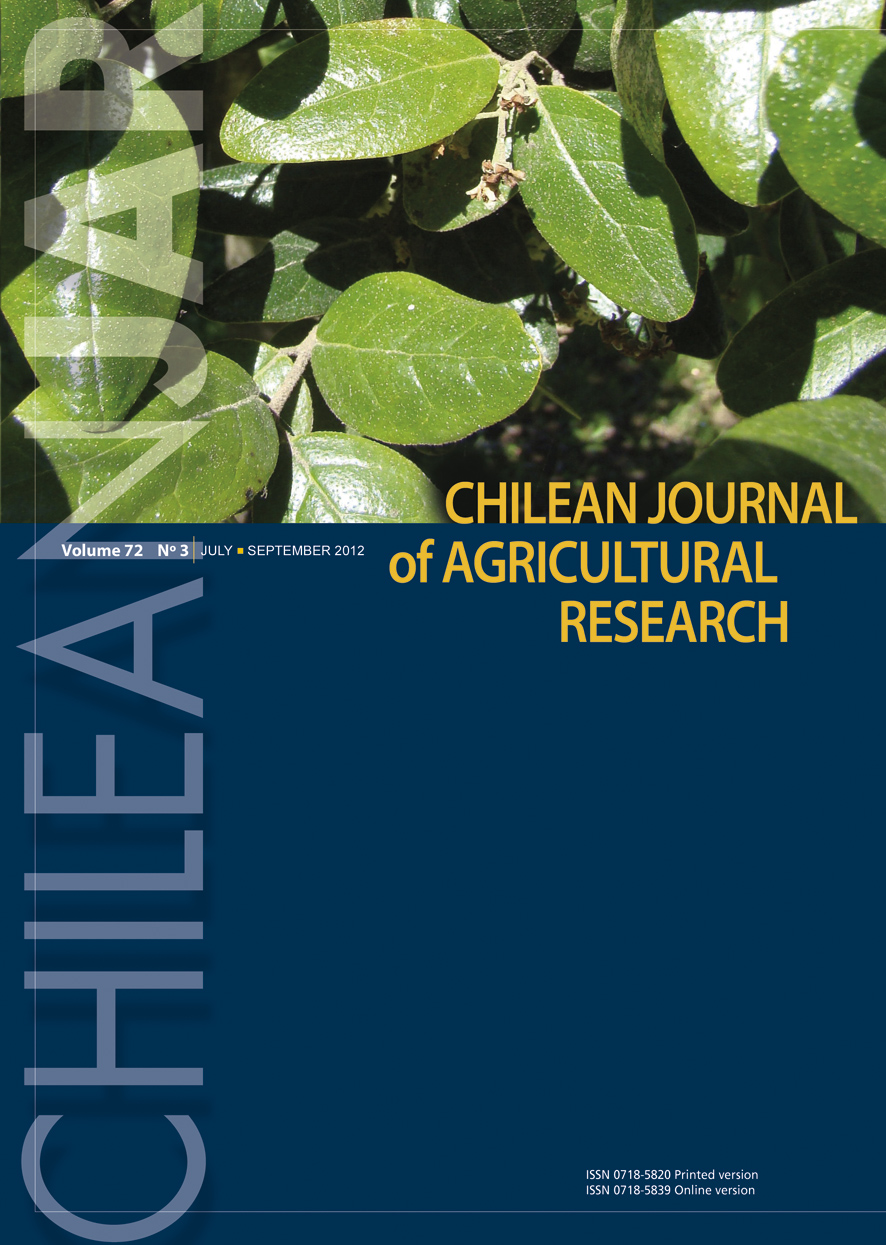
|
Chilean Journal of Agricultural Research
Instituto de Investigaciones Agropecuarias, INIA
ISSN: 0718-5820
EISSN: 0718-5820
Vol. 78, No. 2, 2018, pp. 276-286
|
 Bioline Code: cj18027
Bioline Code: cj18027
Full paper language: English
Document type: Research Article
Document available free of charge
|
|
|
Chilean Journal of Agricultural Research, Vol. 78, No. 2, 2018, pp. 276-286
| en |
Management of penoxsulam- and bispyribac-resistant late watergrass ( Echinochloa phyllopogon  ) biotypes and rice sedge ( Cyperus difformis ) biotypes and rice sedge ( Cyperus difformis  ) in rice ) in rice
Vasilakoglou, Ioannis; Dhima, Kico & Gitsopoulos, Thomas
Abstract
The repeated use of herbicides with the same mode of action maybe has led to buildup of resistant late watergrass
(Echinochloa phyllopogon (Stapf) Stapf ex Kossenko) populations. Thus, pot experiment was conducted to evaluate
the level of penoxsulam- and bispyribac-resistance in seven late watergrass biotypes collected from water-seeded rice
fields in Greece. Their susceptibility to imazamox and profoxydim was also studied. Furthermore, the efficacy of various
herbicide combinations against the resistant late watergrass biotypes, as well as on rice sedge (Cyperus difformis L.)
were evaluated in four field experiments. In pot experiment, two biotypes were resistant to both herbicides, while three
biotypes were moderately resistant to penoxsulam with one of these simultaneously resistant to bispyribac. Four biotypes
were also cross-resistant to imazamox, while all biotypes were susceptible to profoxydim. In field experiments, the double
applications of penoxsulam or bispyribac applied at 18 d after seeding (DAS) followed by profoxydim plus halosulfuron
at 35 DAS constantly provided the greatest rice yield and satisfactory control of both weeds. Conclusively, late watergrass
resistant to penoxsulam and bispyribac biotypes have been built. In particular, rates up to 8 times the recommended rate
did not provide acceptable weed control. Effective control of these biotypes and high rice yield can be achieved by double
applications of herbicides with different modes of action (penoxsulam or bispyribac until the third leaf of rice [18 DAS]
followed by profoxydim at seven-to eight-leaves growth stage [35 DAS]). Simultaneous control of late emerged rice
sedge can be achieved by the addition of halosulfuron in the tank-mix with profoxydim.
Keywords
Herbicide efficacy, imazamox, profoxydim, resistance management, rice yield.
|
| |
© Copyright 2018 - Chilean Journal of Agricultural Research
Alternative site location: http://www.inia.cl
|
|
